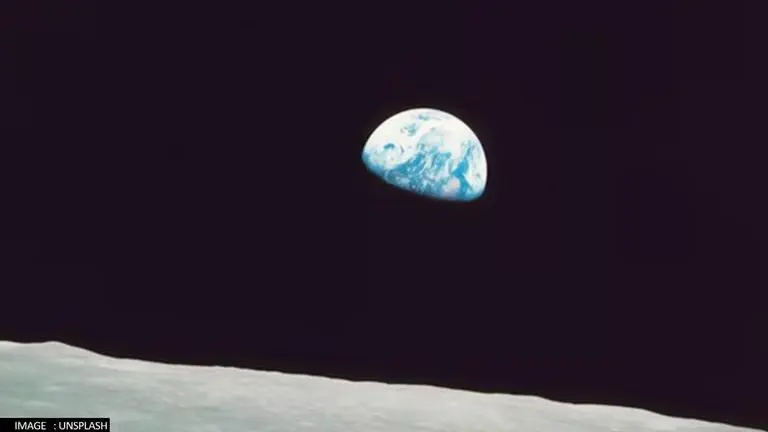Updated 20 October 2021 at 18:59 IST
NASA releases incredible time-lapse video of Earth seen from Moon's south pole; Watch
NASA Goddard revealed that the animation was made after compressing three months of Earth's rotation into a two-minute video.
- Science News
- 2 min read

NASA is ramping up its preparations for the future lunar missions and to amplify the excitement, it has now released a visualisation of Earth’s rotation as seen from the Moon’s South Pole. Created by Universities Space Research Association's Ernie Wright, this intriguing new video shows a glowing blue Earth tumbling in the darkness of space at a rapid pace. Posted by NASA Goddard on YouTube, the visualised animation also creates the illusion that the Earth is rotating backwards.
Take a look at the video here:
Scientists compressed three months into two minutes
According to the description by NASA Goddard, the animation was made after compressing three months of Earth's rotation into a two-minute video. The agency visualised earth's movement from a virtual camera that was placed on the rim of Shackleton Crater of the Moon and was aimed at our planet. Interestingly, this crater is not as wide as the Grand Canyon but is twice as deep. In the video, the mountain visible about 136 kilometres away is unofficially known as Mons Malapert, as per NASA.
Viewers in the video can see the Earth gliding around the Moon's horizon, around 1.5 degrees above or below it. The video even creates such an illusion that makes it look like that the Earth is spinning backwards. Moreover, the video part visualising the second month shows the Earth passing in front of the Sun and creating an eclipse.
Explaining the long shadows seen on the lunar surface, the agency explained that they were caused by the perpetually low Sun angle which produces extremely long shadows that rotate across the rugged lunar terrain.
Advertisement
NASA's obsession with the lunar south pole
The southern pole of the moon is the region that has been untouched by humans till now. To change this fact, NASA is aiming to touch down on the region under the upcoming Artemis mission. Recently, it revealed that it's sending the Volatiles Investigating Polar Exploration Rover (VIPER) to uncover the mysteries of the Moon. The VIPER has been assigned with a task to map and explore the surface and sub-surface of the Permanently Shadowed Regions (PSR) for water and other resources.
🌒 News: Our robotic VIPER rover will land near the western edge of the Nobile Crater at the Moon’s South Pole. The site has never been explored from the lunar surface. There, it will search for water & resources to support #Artemis missions: https://t.co/fyDAhxKe6k pic.twitter.com/pKNqHWOKkW
— NASA (@NASA) September 20, 2021
(Image: NASA Goddard)
Published By : Harsh Vardhan
Published On: 20 October 2021 at 18:59 IST
